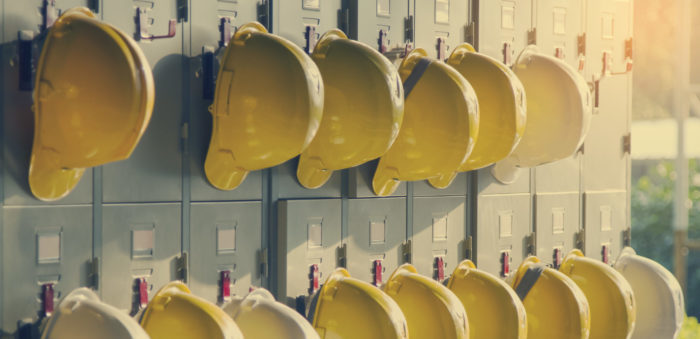In its latest Safety Digest, UK MAIB describes an incident where a foreman fell from through a hatch and down two decks. The incident happened as the crewmembers were trying to lift a test skid. The foreman landed on his right, and was immediately restrained from the other crew in order not to risk further injury. He was later transferred to a hospital.
The incident
A dive support vessel was undergoing periodic surveys. The deck crew had lifted test equipment from the main deck level to two decks below, into a work space. The hatch at main deck level had been closed but not fastened down to recover the test equipment before sailing a few days later. To indicate a trip hazard, the crew had placed portable stanchions and chain barriers around the hatch, without fixing them to the deck.
[smlsubform prepend=”GET THE SAFETY4SEA IN YOUR INBOX!” showname=false emailtxt=”” emailholder=”Enter your email address” showsubmit=true submittxt=”Submit” jsthanks=false thankyou=”Thank you for subscribing to our mailing list”]
A few days later the vessel was about to receive fuel from a bunker barge; during this operation the ship’s crane could not be used. However, tests were complete and the test equipment was ready to be recovered to the main deck. The foreman decided that the lifts could be done before the bunker barge was over , and completed a pre-task assessment and safety briefing.
With the crew fully briefed for the task, the main deck hatch was raised and lifting operations started. The barriers at the main deck hatch remained in place to make sure that crew who were not taking place in the lifts could see the opening. When the bunker barge was sighted making its approach, the foreman stopped the lifting operations, but there was still some test equipment left to move.
To ensure that the vessel was secure and ready for departure after bunkering, the crew moved the test equipment by hand. Soon there was just a test skid left, which was too large to handle. The crew gathered to review what could be done to move the piece of equipment up to the main deck without using the crane.
They decided to rig a series of two chain pulleys to lift the equipment. The first chain pulley was placed onto the pad eye above the main deck hatch. The second chain pulley was then placed onto the hook of the first, creating the necessary length to lift the equipment up two decks. After a quick toolbox talk, the crew took to their stations. Crewmembers who were required to work inside the chain barriers to work the pulleys’ chains wore safety harnesses with fall arresters before taking up their stations. The foreman was at the main deck hatch outside the chain barrier with a radio along with one crewman.
As the test skid was being lifted, the foreman took a step to his left to improve his view of the operation. After that, the foreman stumbled towards the barrier. He tried to stop himself by grabbing a station, but continued onwards towards the opening. The crewman attempted to grab the foreman, but did not succeed and the foreman fell through the hatch and down two decks to the bottom deck, taking the barrier stanchion with him. He landed on his right side and lay prone on the deck. The foreman was then restrained by the crew to limit his movement and risk further injury. He was later taken to hospital for the treatment of multiple fractures.
Probable cause
It is not known what caused the foreman to stumble and fall. Whenever working at height or near openings with a risk of falling, vigilance should be paid to your immediate working area. Consider wearing a fall restraint even if not directly adjacent to the drop.
- When rigging a barrier for an opening in the deck or when working at height, it is important to consider its effectiveness. Is the barrier there to stop a fall or to provide a visual prompt? The closeness of the barrier to the opening should also be considered; if it fails what will be the outcome?
- Finding alternative ways of working can sometimes lead to a loss of situational awareness. Continuous assessment of how a task is being carried out can identify risks introduced by changes.
- A casualty who falls from any height should be assumed to have suffered multiple injuries. When it is safe for them to remain where they are they should be kept as still as possible, as was the foreman in this case. Prompt medical advice and examination must be sought. Crew should be well versed in the required actions to be followed through regular, relevant toolbox talks and drills.






























































